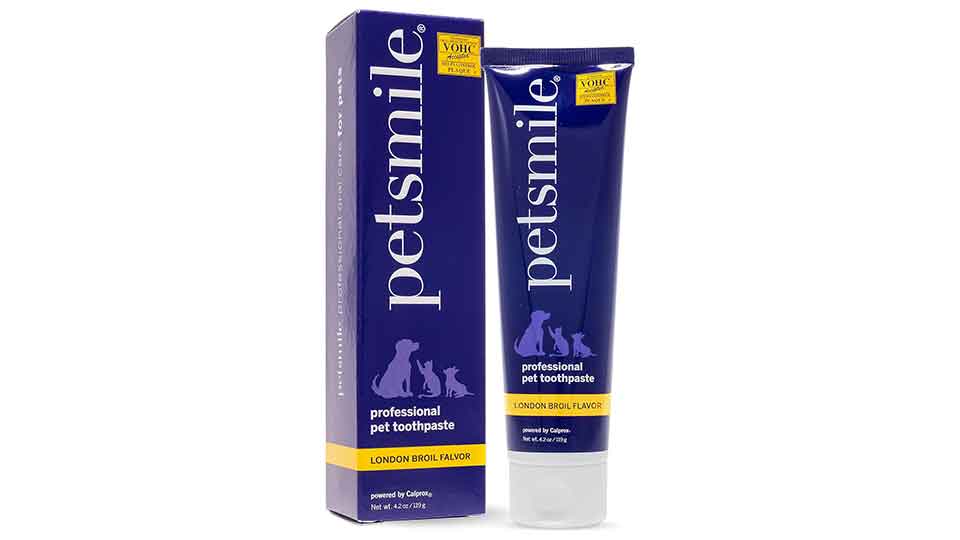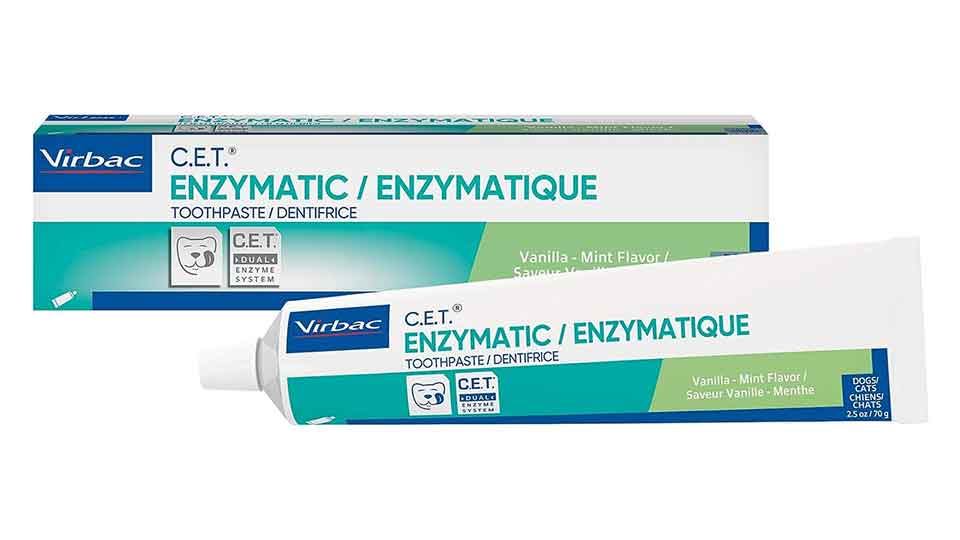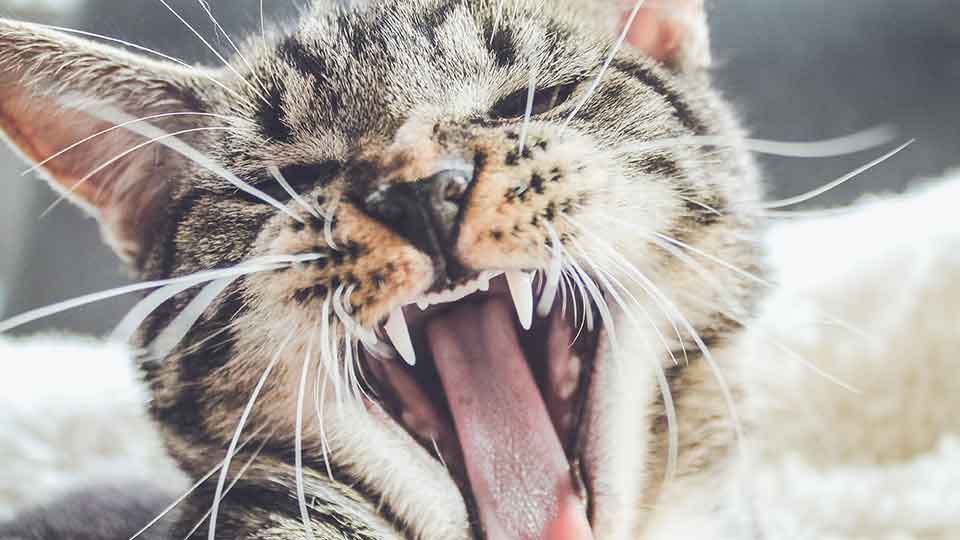Does your cat have bad breath? Difficulty in eating, swollen or red gums or even tooth loss?
If so, you must pay attention to your cat’s dental problem.
You may already know that feeding your cat a balanced diet, providing fresh water, and playing with them is essential for their well-being. But did you know brushing your cat’s teeth is also very important?
The answer is yes, brushing your cat’s teeth is an essential part of their dental hygiene and overall health. However, not all toothpastes are suitable for cats, as some may contain harmful or unpleasant ingredients.
We reviewed some of the best cat toothpastes on the market based on their ingredients, effectiveness, flavor, and ease of use. This is what I recommend:
Best Overall: Petsmile Professional Pet Toothpaste

- VOHC accepted for plaque inhibition
- Contains Calprox, a patented ingredient that dissolves the protein pellicle
- Made with natural and human-grade ingredients
- Does not require brushing
- Comes in different flavors
Are you looking for a toothpaste that can keep your pet’s teeth clean and healthy? If so, check out Petsmile Professional Pet Toothpaste, a veterinary-approved product that claims to be the first and only toothpaste accepted by the Veterinary Oral Health Council (VOHC) for plaque inhibition.
Petsmile Professional Pet Toothpaste contains a proprietary formula called Calprox, which is supposed to dissolve the protein pellicle bacteria adhere to on the teeth.
By removing the pellicle, the toothpaste helps prevent plaque, tartar, and gingivitis, while whitening the teeth and freshening the breath.
The toothpaste also contains natural and human-grade ingredients, such as citric acid, dicalcium phosphate, and urea peroxide, that are safe and effective for your pet.
It contains no harmful or unpleasant ingredients, such as fluoride, xylitol, silica, sulfate, paraben, gluten, or animal by-products.
It also comes in different flavors, such as London broil, and rotisserie chicken, that your pet may enjoy.
What I like
✅ Helps prevent and treat dental problems, such as plaque, tartar, gingivitis, and bad breath
✅ Whitens the teeth and improves gum health
✅ Safe and gentle for your pet
✅ Easy to use and apply
✅ Tasty and appealing for your pet
Things to consider
⭕ Expensive compared to other toothpastes
⭕ May not work for all pets or dental conditions
⭕ May not be available in all stores or online platforms
Best Enzymatic Cat Toothpaste: Virbac CET Enzymatic Toothpaste

- Enzymatic toothpaste for dogs and cats
- Vanilla mint flavor
- Safe and gentle for pets
- Veterinary approved
Virbac C.E.T. Enzymatic Toothpaste is a dental care product for dogs and cats that helps reduce plaque, freshen breath, and ensure a clean mouth.
It contains enzymes that break down the bacteria and food particles that cause dental problems. It also has a vanilla mint flavor that pets love. It is safe to swallow and contains no foaming agents or artificial preservatives.
What I like
✅ Helps prevent and treat plaque, tartar, gingivitis, and bad breath
✅ Improves the oral health and hygiene of pets
✅ Easy to use and apply
✅ Tasty and appealing for pets
Things to consider
⭕ May not work for all pets or dental conditions
⭕ May not be available in all stores or online platforms
⭕ May be more expensive than other toothpastes
Best Value: Arm & Hammer Complete Care

- Enzymatic toothpaste that contains baking soda and enzymes to remove plaque and freshen breath
- Tuna flavor that cats love
- Cat toothbrush with a small head and soft bristles
- Rubber finger brush that fits over your finger and massages the gums
If you want to keep your cat’s teeth clean and healthy, try Arm & Hammer for Pets Complete Care Cat & Kitten Dental Kit.
This is a dental kit that includes flavored enzymatic cat toothpaste, a cat toothbrush, and a rubber finger brush for cats
What I like
✅ Helps prevent and treat dental problems, such as plaque, tartar, gingivitis, and bad breath
✅ Improves the oral health and hygiene of cats
✅ Easy to use and apply
✅ Safe and gentle for cats
Things to consider
⭕ May not work for all cats or dental conditions
⭕ May not be available in all stores or online platforms
⭕ May be more expensive than other products
Why Do You Need to Brush Your Cat’s Teeth?
You may think that your cat’s teeth are self-cleaning or that they don’t need dental care because they don’t eat sugary foods.
However, this is not true. Cats can develop dental problems like humans, suffering from pain, infection, and tooth loss if left untreated.
According to the American Veterinary Dental College, most cats have signs of periodontal disease by the time they are three years old.
Periodontal disease is a condition that affects the gums and the bones that support the teeth.
It is caused by plaque, a sticky film of bacteria that forms on the teeth.
If plaque is not removed, it hardens into tartar, which irritates the gums and causes inflammation.
This can lead to gingivitis, the early stage of periodontal disease.
If gingivitis is not treated, it can progress to periodontitis, the advanced stage of periodontal disease.
Periodontitis can cause the gums to recede, the teeth to loosen, and the bone to deteriorate. It can also affect other organs, such as the heart, kidneys, and liver, through the bloodstream.
Periodontal disease is not only painful and harmful for your cat, but it can also cause bad breath, drooling, difficulty eating, and behavioral changes.
It can also reduce your cat’s lifespan and quality of life.
The good news is that periodontal disease can be prevented or treated with proper dental care, which includes brushing your cat’s teeth regularly.
How to Brush Your Cat’s Teeth?
Brushing your cat’s teeth may sound like a daunting task, but it is not impossible.
With some patience, practice, and positive reinforcement, you can make it a part of your cat’s routine.
Here are some steps to follow:
Choose the right tools.
You will need a cat toothbrush and a cat toothpaste.
A cat toothbrush has a small head and soft bristles that are gentle on your cat’s mouth.
You can also use a finger toothbrush, which fits over your finger, or a gauze pad wrapped around your finger.
A cat toothpaste is specially formulated for cats and does not contain fluoride, xylitol, or other ingredients that are toxic for them.
It also has a flavor your cat may like, such as chicken, fish, or malt.
Before brushing your cat’s teeth, you need to get them used to the tools and the process.
You can do this by letting your cat sniff and lick the toothbrush and the toothpaste.
You can gently rub your finger or the toothbrush on your cat’s lips and gums.
Praise and reward your cat with treats or affection for every positive interaction.
Do this for a few days or weeks, depending on your cat’s comfort level.
Brush your cat’s teeth.
When your cat is ready, you can start brushing their teeth.
Choose a time when your cat is calm and relaxed, such as after a meal or a play session.
You can also wrap your cat in a towel or a blanket to make them feel more secure.
Apply a small amount of toothpaste on the toothbrush and gently lift your cat’s lip.
Start with the front teeth and move to the back teeth, brushing in a circular motion.
You don’t need to brush the inside of the teeth, as the tongue does a good job of cleaning them.
You only need to brush for a few seconds on each side, or as long as your cat allows.
Praise and reward your cat with treats or affection after each session.
Try to brush your cat’s teeth daily or at least a few times a week.
Monitor your cat’s dental health.
Even if you brush your cat’s teeth regularly, you still need to check their mouth for any signs of dental problems, such as bad breath, red or swollen gums, bleeding, loose or broken teeth, or difficulty eating.
If you notice these symptoms, take your cat to the vet as soon as possible.
You should also take your cat to the vet for a professional dental cleaning at least once a year or as your vet recommends.
Professional dental cleaning involves scaling and polishing the teeth under anesthesia and may also include x-rays, extractions, or other treatments if needed.
Remember, brushing your cat’s teeth is not only good for their dental health, but also for their overall health and happiness.
By making it a regular and positive habit, you can help your cat live a longer and healthier life. And who doesn’t want that?







